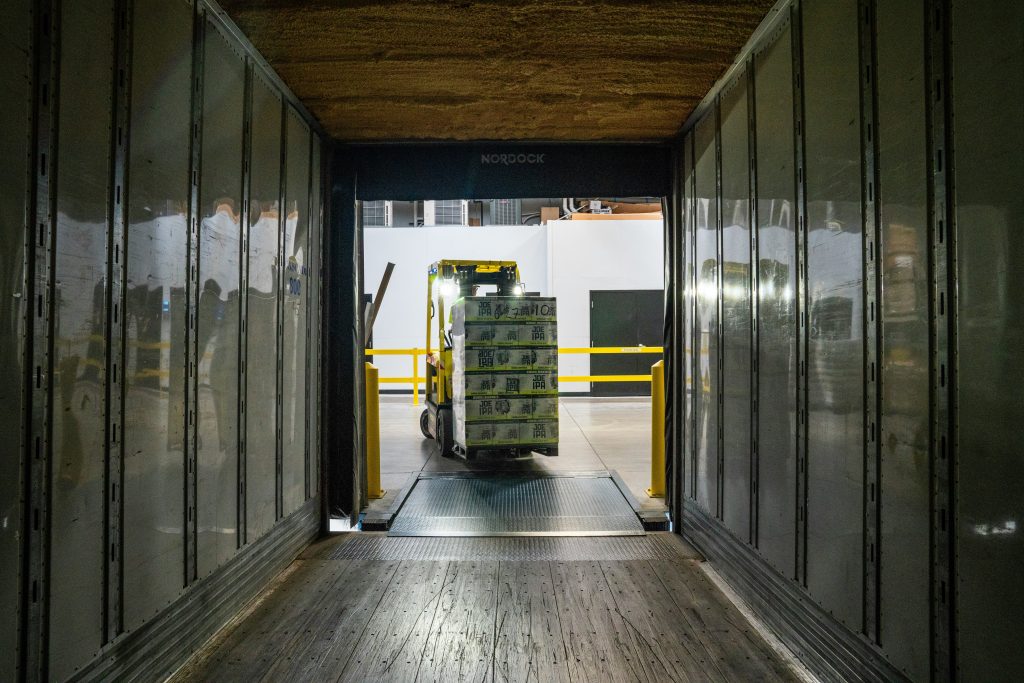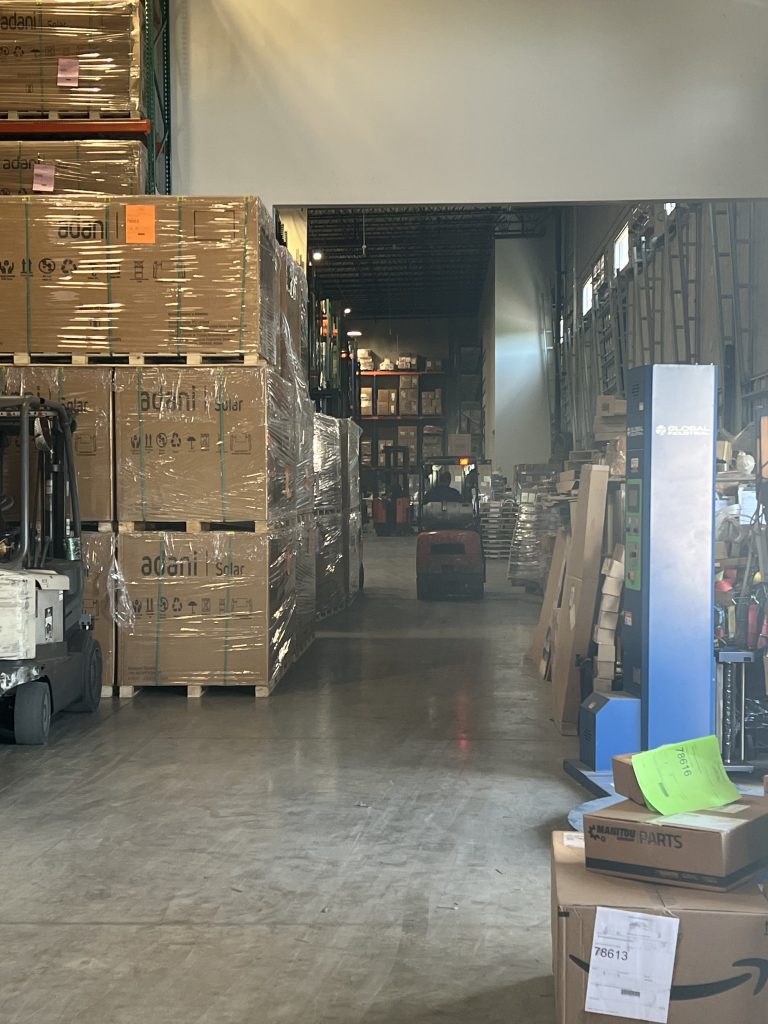Warehousing 3PL: How Third-Party Logistics Optimizes Storage and Fulfillment
As your business grows, the biggest challenge is to keep your logistics processes up to date to cater to the ever-evolving customer demands. Modern supply chains are both fast-paced and unpredictable, which is why more businesses are pursuing ways to optimize supply chains for greater efficiency.
This helps the rising importance of warehousing 3PL, or third-party logistics, which is increasingly becoming the go-to solution for businesses looking to outsource logistics processes from inventory storage and order fulfillment to distribution. The global third-party logistics (3PL) market stood at a value of $1.3 trillion in 2021 and is projected to reach $2.8 trillion by 2031 at a compound annual growth rate (CAGR) of 8.8%. In this blog, we cover what is 3PL logistics, how it contributes to warehousing and distribution, and its impact on supply chains.
What is Warehousing 3PL?
Let’s begin by answering the question, “What does 3PL mean?”. Third-party logistics (3PL) refers to the process where businesses acquire the services of a logistics provider to manage various supply chain activities, including inventory management, storage, and order fulfillment. These providers take over the logistics process from beginning to end, right from the initial arrival, storage, and transportation to the final shipping process.
Difference between 3PL Warehousing and Traditional Warehousing
In a traditional warehouse, logistics operations are managed internally; that is, businesses either own or rent the warehouse space on lease. 3PL warehousing functions more like a shared warehousing management solution where both the provider and business have a stake in partnering to fuel their growth.
- 3PLs reduce the need to obtain warehouse leases or maintain staff for a warehouse, resulting in lower costs.
- It allows businesses to leverage advanced technologies without having to invest upfront
- Businesses no longer need to set up physical distribution centers and venture into new markets.

Benefits of Using 3PL Logistics
1. Cost Savings & Efficiency
Outsourcing to a third-party logistics company means that businesses no longer have to invest in infrastructure, staff, and technology all by themselves. By sharing warehouse space and labor, businesses can lower operational costs as well as take advantage of shared carriers for transporting that reduce shipping expenses.
2. Scalability
Business needs are forever changing, and warehousing 3PL allows businesses to scale operations up or down accordingly. This makes it especially valuable for e-commerce businesses seeking to adapt to demand increases and assist start-ups in their growth initiatives without being burdened with warehousing costs.
3. Faster Shipping
3PL providers cash in on a network of strategically located warehouses, hence making it possible to ship products from multiple warehouses at a single time. This eventually reduces transit time, particularly in the case of international shipments, so that orders can be delivered the same day or, at most, 2 days for satisfied customers. Not only that, it greatly contributes to order accuracy with a lower risk of errors or delays.
Key Services Provided by 3PL Warehouses
A 3PL warehouse is not simply a regular storage center; it functions as a smart warehouse offering end-to-end logistics solutions to improve supply chain management. Here’s a breakdown of the most important offerings by 3rd party logistics.
1. Inventory Management
3PL warehousing deploys cutting-edge 3PL Warehouse Management System (WMS) to help businesses maintain optimum inventory levels. It offers real-time inventory tracking so that businesses can ensure they are well-stocked and make the best possible use of storage space to cut down holding costs. If they are short on supplies, they can be replenished automatically to keep supply chains running.
2. Storage Solutions
3PL warehouses offer flexible storage options that can be adapted to specific business needs. You can opt for either public warehousing if you are faced with shifting inventory news, while a private warehouse gives you exclusive control over storage. Storing goods in a bonded warehouse exempts you from paying import duties until the goods are cleared from customs.
3. Order Fulfillment
3PL warehouses automate the entire order fulfillment process through an electronic data interchange (EDI) system, right from processing, picking, and packing orders to selecting shipping routes to ensure orders are delivered on schedule and cost-effectively. For e-commerce businesses, 3PL fulfillment affords a chance to tap into multiple platforms like Amazon and Shopify.
4. Transportation
Shipping involves the transfer of freight or physical goods from suppliers to end customers. 3PL companies also provide freight management services that include planning routes and finding capable transloading services to ensure a smooth and swift transfer of goods.
5. Reverse Logistics
Returns are all too common with orders, and third-party logistics companies make it easier for businesses to manage and process refunds and exchanges efficiently. This includes checking and restocking returned products while minimizing waste by repackaging and refurbishing returned goods.
6. Technology & Automation
Modern 3PL warehouses have substituted tedious manual processes with advanced technology like AI, robotics, and data analytics to enhance supply chain efficiency. Thanks to 3PL warehousing services, companies can harness data to make well-informed supply chain decisions, as AI provides real-time insights into the shipping process to improve order accuracy and reduce fulfillment errors.

FAQ’s
1. What is the difference between 3PL and 4PL logistics?
3PL providers are mainly concerned with the functions of warehousing and fulfillment, whereas 4PL providers oversee all aspects of the supply chain. This includes managing multiple 3PLs at a time, handling transportation, and even devising a logistic strategy.
2. How do I know if my business is ready for a 3PL warehouse?
Various indicators can determine that, like delayed orders, spiraling logistics costs, a lack of adequate storage space, and inefficient fulfillment processes. If you are facing these issues, it is high time to partner with a 3PL provider.
3. What types of businesses benefit from 3PL warehousing?
All types and sizes of businesses are likely to benefit from warehousing 3PL, including eCommerce retailers, wholesalers, as well as manufacturers and businesses dealing in subscription box services, in terms of faster delivery and reduced overhead costs.
4. How does a 3PL provider help with order fulfillment?
Once an order is placed, 3PL fulfillment tackles the entire process, from storing it securely and handling packaging and shipping orders to ensuring orders get delivered efficiently and precisely.
Conclusion
3PL warehousing manages logistics on your behalf, ensuring a smooth flow of goods and on-time deliveries. It has radically transformed traditional warehousing by bringing higher levels of efficiency and productivity to logistics processes, removing bottlenecks, and speeding up operations in the process. It does come with its share of challenges, like reduced control over your operations and misaligned expectations if the business and 3PL provider are not on the same page.
However, its benefits far outweigh the risks, making it a desirable logistics solution to keep your supply chains in order. Having the right supply chain partner by your side can help fulfill your business needs and break down barriers to help you reach your growth potential. Contact us to get responsive and customized guidance on how our 3PL solutions can drive you toward success in a fast-moving logistic landscape.